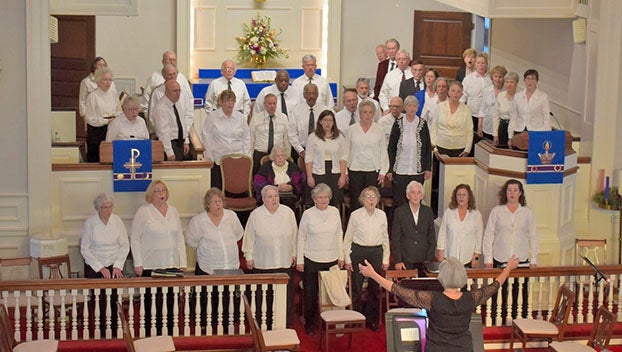PE Boards Eye Schools
Published 4:29 pm Thursday, March 24, 2011
PRINCE EDWARD – While school officials are expecting less state funding in the coming budget year, the good news is that the funding is still more than what the governor's budget proposed.
County school board and board of supervisors members sat down last week and chewed the fat over school funding requests. Specifically, in their budget preparations, school officials are looking at an Average Daily Membership (ADM) of 2,372 (down from last year's budged amount of 2,460) and factoring level local funding ($7,118,525), $615,485 less in state funding (or a total of $14,789,842), and a slight increase ($122,286) in federal funding (or a total of $3,003,330).
Still, there were more anticipated expenditures to factor for the schools, including a 3.6 percent increase in health insurance costs ($56,800) and a 2.4 percent increase in the employer share of the Virginia Retirement System ($310,340).
Or a total projected shortfall of $860,339.
“…When the final legislative action was over, we were relieved to have things improved somewhat over what the governor's projections were. That's a bit of good news in this,” Division Superintendent Dr. David Smith commented.
School officials have identified areas to meet revenue shortfalls and specifically identified potential reductions of unfilled positions in the current fiscal year ($253,820) that include an elementary vision teacher, elementary early childhood teacher, elementary special education aide, middle school speech teacher and high school business teacher; position reductions for the coming year, including four part-time elementary cafeteria aides and two special education teachers ($140,360); and elimination (on the expenditure side of the equation) of one-time federal funds ($350,655).
Or a reduction of $744,835.
“As we move forward and we look through our budget and we look through areas of where we could reduce some expenditures without taking anything away from instructional materials for our students in the classroom, going through the budget, going through all the different categories, we have come up with areas where we can reduce our expenditures, not hurt our school division, not hurt the students' academics,” School Finance Director Cindy Wahrman also detailed.
She offered an example of reducing out-of-county travel for teachers' professional development. What they have been doing, she cited, is to use federal funds to bring that professional development here providing workshops so that they're not having expenses for attending workshops or conferences, travel or perhaps overnight lodging. That also helps reduce the need for substitute teachers, she cited.
Essentially, school officials have identified $371,746 of funding availability in addition to the reductions but also factor funding additional requests from schools and departments totaling $70,500 (which includes service contracts and a gifted resource teacher to provide services division-wide). Still, it would leave a funding availability of $301,246.
Dr. Smith noted that the school board has talked and “recognizing the fact that our employees are at their third year without a pay raise or a bonus, we recognize the need to help our employees and what the school is talking about right now is between a one and a half and two percent raise for all employees and we're working on fine-tuning those calculations right now. So that would fall within the level funding request that we're making.”
A two percent increase, it was calculated, would cost-with benefits-$333,700.
“What do you think the chances of the budget being worse next year are?” asked supervisor Don Gantt.
Dr. Smith responded that his “crystal ball is not real sharp when it comes to that” but also added that indications are that the governor may be making K-12 education more of a priority next year like he did for higher ed this year “and that…I would suspect…that there'll be some things that are different in priorities but it could potentially result in a little bit of increased funding making up some of the huge cuts that have come to public education over the last several years.”
State revenues, Dr. Smith highlighted, seem to be showing an upswing, which would apply to education and funding to all parts of government. He offered it's a “hopeful sign.”
The boards also touched on possible future capital needs and, as part of that discussion, improved athletic facilities. (One prior estimate projected improvement costs at over $5 million, though the two boards have discussed some scaled-back improvements in the past.)
Dr. Smith offered, “We understand that we're not gonna be able to move forward on a $5 million…outside athletic facilities plan in the current economic climate and that there's probably not much willingness to borrow the money to make that happen either…but the things that are the more critical are gonna be related to our roof repair or replacement and our HVAC repair.”
The most critical thing that they would be facing, Dr. Smith assessed, would be the middle school roof.
The superintendent outlined that they have made some improvements to the athletic facilities-rebuilding the press box floor to ceiling and filming deck on top, the superintendent said. They also hired a firm to replace the wooden crossbars on all the lights on the football field with steel.
Asked about dealing with increasing fuel costs, Dr. Smith responded that they have some contingency plans. They buy diesel fuel with a consortium with other school districts, he cited, which has provided “quite a savings” and that they're hoping gasoline can be incorporated into that (though they buy less).
“But, clearly, in…getting a price for next year when the consortium makes that move here in the next six weeks or so, I'm sure there'll be a significant increase,” Dr. Smith.
It was also suggested that school officials consider propane.
“For any retrofit or new construction, new HVAC units or new boilers that we would have to replace, I would certainly want to look at that option,” Dr. Smith said.
He also offered that he would want to look at a comparison in efficiency in whatever new units they had to install and he, personally, would be open to propane versus heating oil.
“Any of us could look at our budget, no matter how well funded or how far under-funded we are and say, you know if we only had a little more money here or a little more money here, we could do just a little bit more,” Dr. Smith commented. “I think that we are…funded at a level that gives us the support that we have to have to make the improvements that we need to make, while not allowing us the extravagance of going off in any direction doing just anything that we wanna do. It's a level that I think…helps us stay focused and maintain priorities on increasing student achievement and improving our programs that we offer the children without being what anyone would call extravagant.”
He offered that they are very appreciative of the level of funding that supervisors are continuing to provide.
School Board member Dr. Ellery Sedgwick also assessed that things are better than they could be, but tight. He also highlighted concerns in particular with a couple of unfunded mandates coming down from the state, citing a mandate to add to the physical activities 150 minutes a week, noting and a lot of systems are going to be in a position to having to hire more PE instructors. He also highlighted a mandate to give every graduate a personal finance course and one or two positions are going to be needed down the road.
School Board Chairman Russell Dove also offered that it's “a budget that we can work with,” adding that it's going to make them have to make some hard choices.





